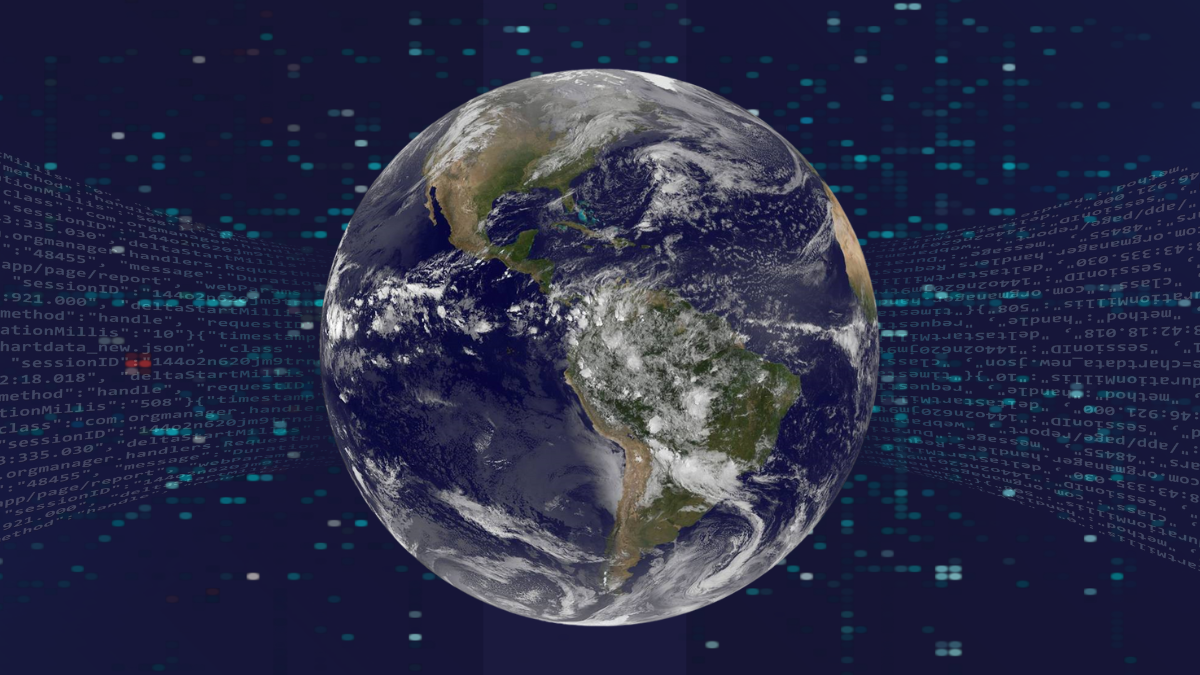Editors’ Vox is a blog from AGU’s Publications Department.
Monitoring climate variability, natural phenomena, and rapid changes in our environment is now possible thanks to the availability of many satellite missions and ground-based arrays observing the Earth and the Sun continuously. An increasingly large volume of data is being recorded forming so-called “big data”. It is not only “big” in terms of volume, but also in terms of complexity (various types, resolutions, coverage, etc.) and difficulties posed by processing. An important aspect of “big data” analysis is to understand the variability in terms of spatial and temporal evolution of the signals contained in the datasets (Mudelsee, 2014; Montillet and Bos, 2019; Chen et al., 2022; Papadopoulos and Balta, 2022). These very large datasets challenge the conventional approaches that guide scientists to deal with the extraction of relevant information.
In geoscience, techniques for big data interpretation are becoming increasingly important across a range of domains.
In geoscience, techniques for big data interpretation are becoming increasingly important across a range of domains. However, until very recently, geophysics has not significantly benefitted from such expansive datasets, owing to the spatial and temporal complexity related to the acquisition and interpretation of geophysical data in three-dimensional space. A new special collection focuses on the challenges related to analysis of big data to discover new information on complex aspects of Earth and space structures and behaviors, their relations with Earth climate variability, and their bearing on the evolution of land, ocean, atmosphere, and space environments.
In the past several decades an expansion in computational resources has been progressing hand-in-hand with spatially and temporally expansive geophysical surveys – land-based, marine, airborne, or acquired from space – allowing for geophysical interpretation of big datasets that cross international and disciplinary boundaries. For example, the detection and forecasting of floods and droughts are now possible by tracking the water storage from the processing and correlation of a huge amount of satellite observations (e.g., GRACE and GRACE-FO, Rodell and Reager, 2023). Combined with in situ hydrological data (e.g., precipitation), it allows meteorological organizations and other governmental authorities to forecast possible droughts and floods worldwide. These organizations can then prepare or adjust their resilience plan for the concerned areas, working with local communities and industries in order to mitigate any risks (e.g., loss of businesses, loss of biodiversity). In meteorology, weather forecasting profits from the use of several satellite instruments, such as those on board of Sentinel-3 satellites, from which the total column water vapor can be obtained (Calbet et al., 2022). Various satellite geodetic techniques, such as the Global Navigation Satellite System (GNSS) and the Interferometric Synthetic Aperture Radar (InSAR), can be combined to monitor the geodynamics of the Earth surface and the modifications in our environment, such as sea level and natural hazards (Freymueller and Sànchez, 2019).
Another example is the influence of solar forcing, besides other natural and anthropogenic forcings, on Earth’s climate (see Gray et al., 2010; Matthes et al., 2017). Global climate models use various big datasets to model the Earth’s climate. Among them, Total Solar Irradiance (TSI), i.e., the amount of energy received from the Sun at Earth, has been measured by successive space instruments spanning four decades. Some of these TSI measurements have lasted for more than a decade generating a huge amount of data to analyze and to extract new robust information about the effect of solar variation on the Earth’s atmosphere. Solar spectral irradiance and energetic particles are important drivers of the chemistry, temperature, and dynamics of the Earth’s atmosphere. Therefore, climate modelers use various scenarios of forcing datasets to study the influence of solar activity on climate (IPCC, 2021; Shiokawa et al., 2021). It is a tremendous task to manage and analyze these vast amounts of data resulting from climate simulations.
This special collection is a venue for contributions that make use of big datasets to shed light on the understanding and modeling of complex phenomena related to either the Earth system or Sun-Earth climate interaction.
This special collection is a venue for contributions that make use of big datasets to shed light on the understanding and modeling of complex phenomena related to either the Earth system or Sun-Earth climate interaction, including the structure or processes of the solid Earth, the Earth system, space weather, and land-atmosphere processes. We are particularly interested in the use of novel methods, such as machine learning or deep learning, and their recent applications in big data analysis. In AGU’s journal Earth and Space Science, we also encourage review manuscripts on exploiting the application of “big data” for monitoring climate variability, natural phenomena, and changes in the Earth system.
This is a joint special collection between Earth and Space Science, JGR: Solid Earth, JGR: Space Physics, Geophysical Research Letters, and JGR: Atmospheres. Manuscripts can be submitted to any of these journals depending on their fit with the journal’s scope and requirements.
—Jean-Philippe Montillet ([email protected]; ![]() 0000-0001-7439-7862); Weiping Jiang; Margit Haberreiter; Eulogio Pardo-Igúzquiza; Rui Fernandes; Xiaoxing He; Gaël Kermarrec; Ehsan Forootan; Zunyi Xie; Graziella Caprarelli; and Isabelle Manighetti
0000-0001-7439-7862); Weiping Jiang; Margit Haberreiter; Eulogio Pardo-Igúzquiza; Rui Fernandes; Xiaoxing He; Gaël Kermarrec; Ehsan Forootan; Zunyi Xie; Graziella Caprarelli; and Isabelle Manighetti

